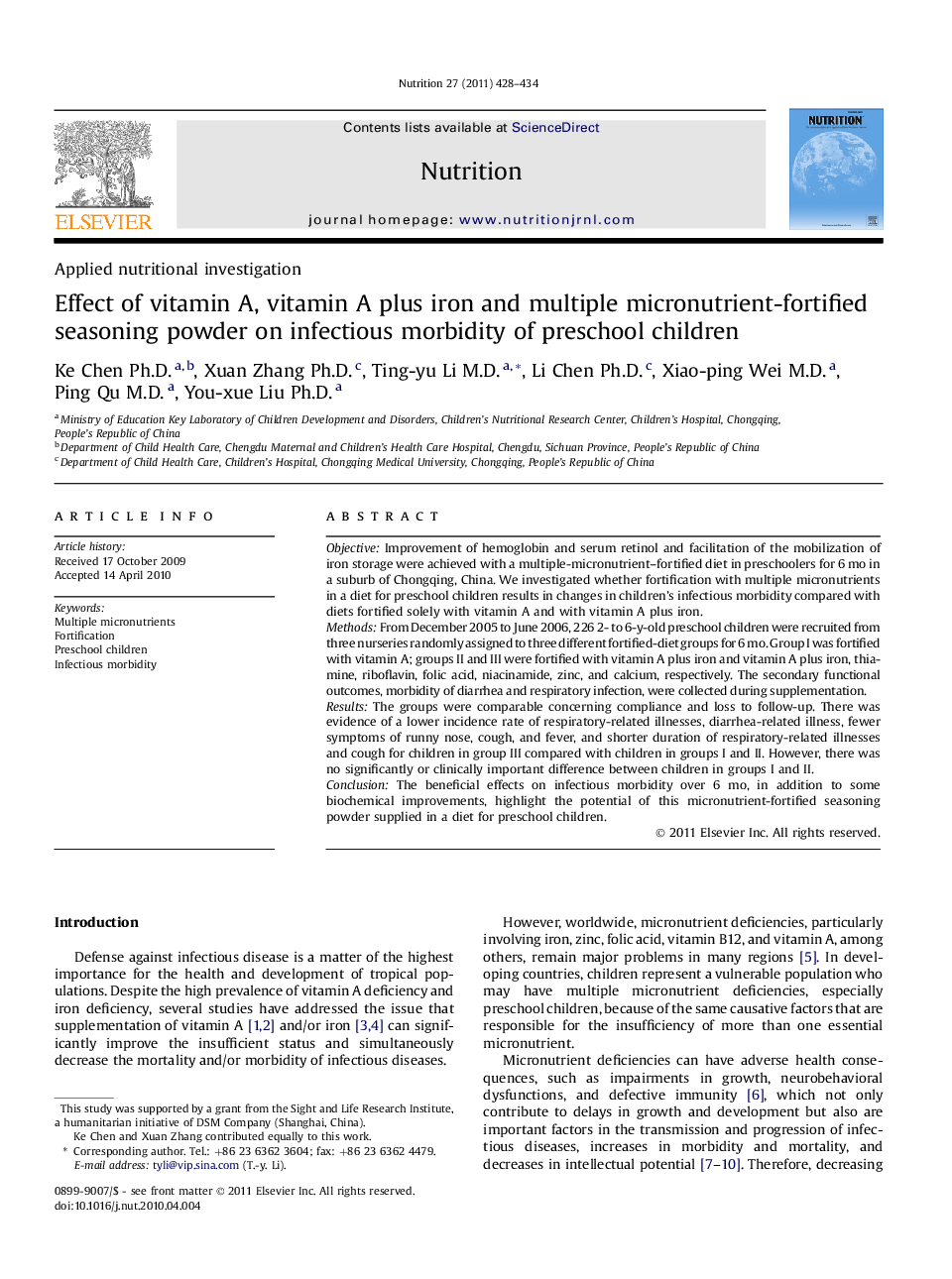| Article ID | Journal | Published Year | Pages | File Type |
|---|---|---|---|---|
| 3276568 | Nutrition | 2011 | 7 Pages |
ObjectiveImprovement of hemoglobin and serum retinol and facilitation of the mobilization of iron storage were achieved with a multiple-micronutrient–fortified diet in preschoolers for 6 mo in a suburb of Chongqing, China. We investigated whether fortification with multiple micronutrients in a diet for preschool children results in changes in children's infectious morbidity compared with diets fortified solely with vitamin A and with vitamin A plus iron.MethodsFrom December 2005 to June 2006, 226 2- to 6-y-old preschool children were recruited from three nurseries randomly assigned to three different fortified-diet groups for 6 mo. Group I was fortified with vitamin A; groups II and III were fortified with vitamin A plus iron and vitamin A plus iron, thiamine, riboflavin, folic acid, niacinamide, zinc, and calcium, respectively. The secondary functional outcomes, morbidity of diarrhea and respiratory infection, were collected during supplementation.ResultsThe groups were comparable concerning compliance and loss to follow-up. There was evidence of a lower incidence rate of respiratory-related illnesses, diarrhea-related illness, fewer symptoms of runny nose, cough, and fever, and shorter duration of respiratory-related illnesses and cough for children in group III compared with children in groups I and II. However, there was no significantly or clinically important difference between children in groups I and II.ConclusionThe beneficial effects on infectious morbidity over 6 mo, in addition to some biochemical improvements, highlight the potential of this micronutrient-fortified seasoning powder supplied in a diet for preschool children.
